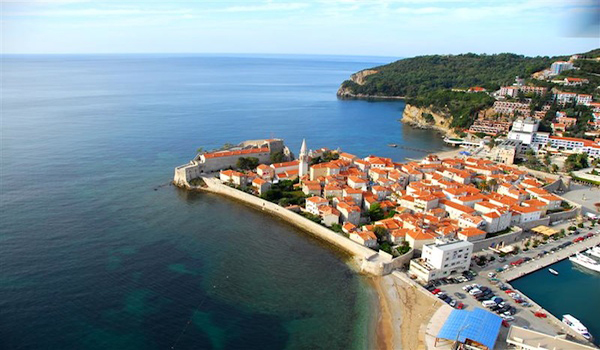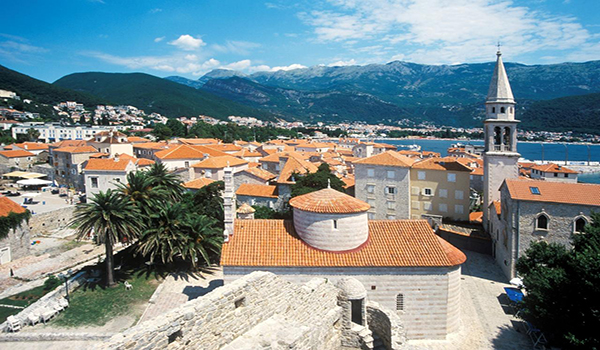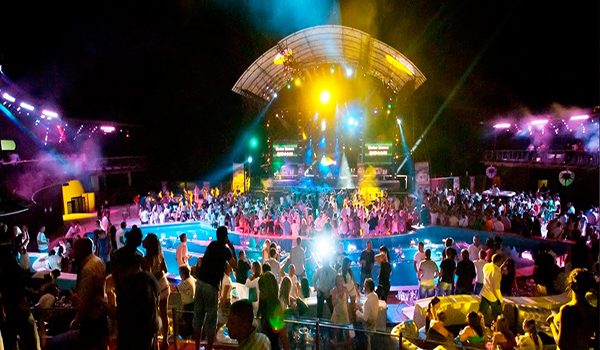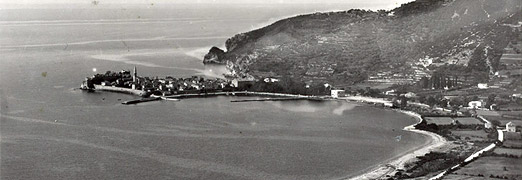Budva – Becici
If you can make enough challenges, then Budva is a city for you. Leave the shore and allow you to take the breath of the Mediterranean summer – short and hot. Spread the barefoot between the walls of the medieval city. Feel the spirit of antiquity and the Renaissance charm of Old Town buildings. And the Illyrians, Helen, were thrown by the Romans in the Budvanian soil and left traces. Discover what kind. Certainly one of the important reasons for coming to the Budva Riviera is the beautiful sandy beaches, natural exhibits that are a trademark of this part of the Adriatic. A crazy and unforgettable night outdoors, party to the early morning, beach parties, bars, terraces with a scenery where the prestigious Mediterranean Riviera, many discos, daily parties, pampering with unusual spending make Budva one of the most interesting and most attractive destinations on the Adriatic when it comes to the party.
Becici
Becici is a tourist place in Montenegro. Becici is a tourist complex behind the famous Bečići beach, not far from the town of Budva on the Montenegrin coast. The location and beautiful sandy beaches as well as many facilities make it ideal for a family holiday. The center for swimming and relaxation, offers the possibility of dealing with a large number of sports on the water and outside. Vienna Beach won the Grand Prix in Paris, as the most beautiful beaches in Europe Modern. Vienna’s primary commitment to providing services to tourists perfectly complements the magic of the walls of the old town of Budva with its large selection of cafes, restaurants and shops. The Old Town is about a kilometer away and it is reached by a light walk by a coastal promenade or a small carriage. If you take the opposite direction from Budva you will arrive in Rafailovići, a famous old fishing village where you can spend the beautiful moments in some of the many cafes or restaurants. Some of the most beautiful beaches in Montenegro are located not far from Becici. You can reach them by car in just an hour driving by car. The beaches of Mogren, Miločer, Przno and Kamenovo are especially distinguished. Bečići is abundant, cafes, restaurants and night clubs. During the season it is difficult to find a place to sit down because the cafes are crowded with tourists. Nighttime activities usually begin with a visit to one of many open bars on the Budva promenade, such as Trocadero, Miami, Renaissance and Rafaello. Due to the fact that the possibility of playing music is allowed up to 1 hour after midnight, the tour continues in some of the numerous nightclubs, the most famous of which is newly built Trocadero, which for a little bit more money provides top-class entertainment. Far from the city are night clubs Maine and Turin, the last of which is in Becici, but it is often full and insist on folk music.




History of Budva
The Old Town of Budva is a specific Mediterranean combination of landscape, history and culture in the southern part of the Adriatic coast. In the interior and in the immediate vicinity of the Budva hut, a unique history of two and a half millennia long hides it among the oldest urban centers of the area. According to its urban structure, Budva was a “polism” that had all the features of Greek urbanism with the main street, which led to the main city square, but not through the city center, but lateral as it is today. However, its present appearance with walls as an important fortification system is mostly related to the Middle Ages, although it was later destroyed and reconstructed, especially after the earthquake of 1667. On the Montenegrin coast near Kotor, only Budva has a wall that surrounds the whole core of the city with narrow streets and small squares. People began settling in the area of Budva very early because of their favorable geographical position and mild climate. The oldest, now known traces of material culture from the territory of Budva (Paštrovići, Maini and Grbalj) date back to the prehistory, in the Bronze Age and the Iron Age when the Illyrian tribes were inhabited in this area. There are hill fortifications in which Illyrian riders lived in their communities and stone tumuli in which they were buried.
In accordance with antique historical sources, written heritage and rich archaeological material, Budva is one of the oldest urban centers on the Adriatic, older than 2,500 years. A large number of monumental antique and medieval times is evidence of the continuous and active life of this ancient city. Iliri, i.e. This Illyrian tribe, Enhelian, are the oldest indigenous inhabitants of Budva. In B. v. The Greek tragedy of Sofokles, among the first writers, mentions Budva “Illyrian city”. In the 4th century B.C. Greece was settled by colonization, when it became a rich trading center (emporion), while in the middle of the second century B.C. or more precisely in 168, it was conquered by the Roman Empire. In the first century of the new era, the Roman writer of Pliny, the elders referred to it as the “fortified city of Roman citizens”. In that period, Budva had all the characteristics of a real Roman city with monumental buildings, paved roads and massive walls. He will remain in the Roman Empire until his fall in 395th year. After the destructive earthquake that covered the area of Budva in 518, the Byzantine emperors began to rule Budva (535), and according to Konstantin Porphyrogenitus, a Byzantine emperor from the 10th century, and in the 9th century, more precisely after the beginning of the settlement of 841 Slavs, although there are data on their settlement in the 7th century. Most of the Roman population slowly mixed with the Slovaks that brought Christianity to the press. In the fatal year 841, Budva was destroyed by the Arabs (Saracens) who attacked it from the sea. There are data that Avaris attacked it in the 6th and 7th centuries, robbed and even settled there, so Budva in Budva was Avarorum sinus. Byzantine Emperor Vasily I (867-886) expelled the Arabs from the eastern coast of the southern Adriatic. Evidence of the relatively rapid recovery of Budva and its rise in the 10th and 11th centuries is the fact that between 1089 and mid 12th century became diocese with the cathedral church of St. Ivan the Baptist, and as such was the subject of a dispute between the Bar and the Dubrovnik Archbishop.

Between 1184 and 1186, the city fell under the Nemanjić dynasty and remained part of it until the middle of the 14th century, when Balsic’s dynasty returned it. During the reign of the Nemanjić dynasty, The rule of emperor Dusan (the first half of the KSIV century), the “Statute of Budva” was written, as the first law that gave Budva a certain autonomy. In the second half of the KSIV and the beginning of the KSV century, first of all, Balsic, Radic Crnojevic, then Sandalj Hranic and, finally, Djurdje Stracimirovic. After the death of Đurđa Stracimirović, Budva was taken over by the Venetians, who in 1403 left it to the third Balsa, which ruled until 1419, when the Venetians again made it. In a short time he was under the despot, Đurađ Branković, and in 1442 he passed to Venice under which he remained until the fall of the Republic in 1797. During the Venetian rule in Budva, small shipbuilding was built for the construction of small ships for offshore purposes.
The most important ancient and medieval names for Budva are: Buthoe, Budua, Butua, Butoba, Budova and Civitas Antiku, Old Town. From 1797 to 1806 Budva was occupied by Austria, and then, from 1806 to 1807, it was under the rule of the Montenegrin Government, and between 1807 and 1813 it was under French occupation, and then again under Austrian, under which it remained until 1918, when it was liberated by the Army of Serbia and Montenegro. The Second World War took many victims from this field of struggle.
